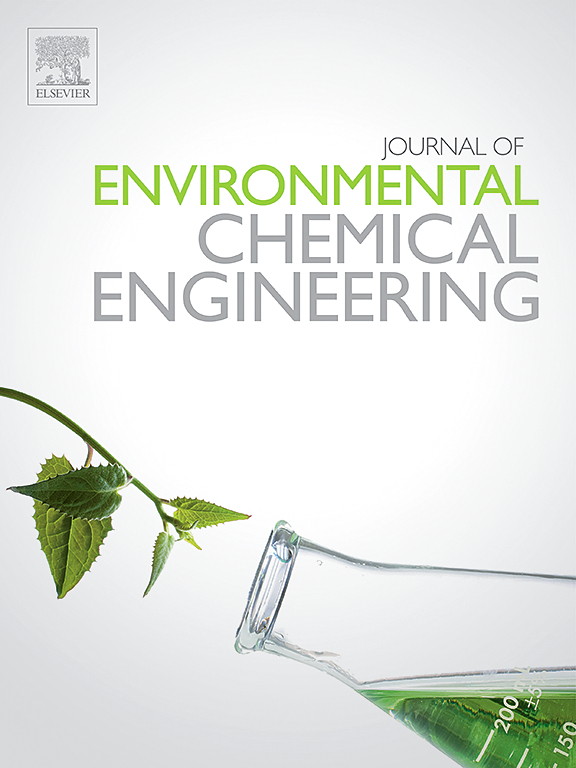质谱成像揭示了阿奇霉素在斑马鱼中的命运:摄取、分布、转化和代谢影响
IF 7.4
2区 工程技术
Q1 ENGINEERING, CHEMICAL
引用次数: 0
摘要
大多数已发表的文章都将抗生素报道为新兴污染物。进入生物体后,它们迅速积聚在作用部位,具有不同的组织分布,并有可能干扰内源性代谢物的正常代谢。然而,同时澄清外源性和内源性代谢物的空间分布很少实现。质谱成像(MSI)允许在组织内的内源性和外源性分子的无标记检测。本研究采用解吸电喷雾质谱成像技术(DESI-MSI)研究了阿奇霉素(AZM)在蓝条纹斑马鱼体内的生物积累、消除和转化过程。斑马鱼体内AZM表现为一级动力学模型,肠道是最长的t1/2 (3.5 d)区域。斑马鱼表现出惊人的生物转化能力,AZM的三种生物转化产物(BTPs)在斑马鱼中检测到最多。进一步观察内源分子的空间分布,观察其强度和类型的差异,发现对甘油磷脂(GP)、氨基酸(AA)、神经酰胺(Cer)、甘油磷脂(GL)和鞘磷脂(SM)有显著影响。这些结果表明,MSI有助于研究药物的分布和代谢,有助于加深对药物代谢的认识,准确定位药物的作用靶点,提高药物开发的效率和质量。本文章由计算机程序翻译,如有差异,请以英文原文为准。
Mass spectrometry imaging unveils the fate of azithromycin in zebrafish: Uptake, distribution, transformation, and metabolic impact
Most of the published articles have reported antibiotics as emerging pollutants. Upon entering organisms, they rapidly accumulate in the sites of action, with varying tissue distributions and the potential to interfere normal metabolism of endogenous metabolites. However, the simultaneous clarification of the spatial distribution of exogenous and endogenous metabolites has seldom been achieved. Mass spectrometry imaging (MSI) allows the label-free detection of endogenous and exogeneous molecules within tissues. Desorption electrospray ionization mass spectrometry imaging (DESI-MSI) was used in this study to explore the bioaccumulation, elimination and transformation process of azithromycin (AZM) over blue-striped zebrafish. AZM in zebrafish showed a first-order kinetic model, and the intestine was identified to be areas with the longest t1/2 (3.5 days). The zebrafish showed a striking ability for biotransformation as three biotransformation products (BTPs) of AZM have been detected mostly in the zebrafish. The spatial distributions of endogenous molecules were further examined to observe more differences in intensity and types, a significant impact on the Glycerol phospholipids (GP), amino acids (AA), Ceramide (Cer), glycerolipids (GL) and Sphingomyelin (SM) was found. These results indicate that MSI contributes to the research on drug distribution and metabolism, helps deepen the understanding of drug metabolism, accurately locate the action targets, and improve the efficiency and quality of drug development.
求助全文
通过发布文献求助,成功后即可免费获取论文全文。
去求助
来源期刊

Journal of Environmental Chemical Engineering
Environmental Science-Pollution
CiteScore
11.40
自引率
6.50%
发文量
2017
审稿时长
27 days
期刊介绍:
The Journal of Environmental Chemical Engineering (JECE) serves as a platform for the dissemination of original and innovative research focusing on the advancement of environmentally-friendly, sustainable technologies. JECE emphasizes the transition towards a carbon-neutral circular economy and a self-sufficient bio-based economy. Topics covered include soil, water, wastewater, and air decontamination; pollution monitoring, prevention, and control; advanced analytics, sensors, impact and risk assessment methodologies in environmental chemical engineering; resource recovery (water, nutrients, materials, energy); industrial ecology; valorization of waste streams; waste management (including e-waste); climate-water-energy-food nexus; novel materials for environmental, chemical, and energy applications; sustainability and environmental safety; water digitalization, water data science, and machine learning; process integration and intensification; recent developments in green chemistry for synthesis, catalysis, and energy; and original research on contaminants of emerging concern, persistent chemicals, and priority substances, including microplastics, nanoplastics, nanomaterials, micropollutants, antimicrobial resistance genes, and emerging pathogens (viruses, bacteria, parasites) of environmental significance.
 求助内容:
求助内容: 应助结果提醒方式:
应助结果提醒方式:


